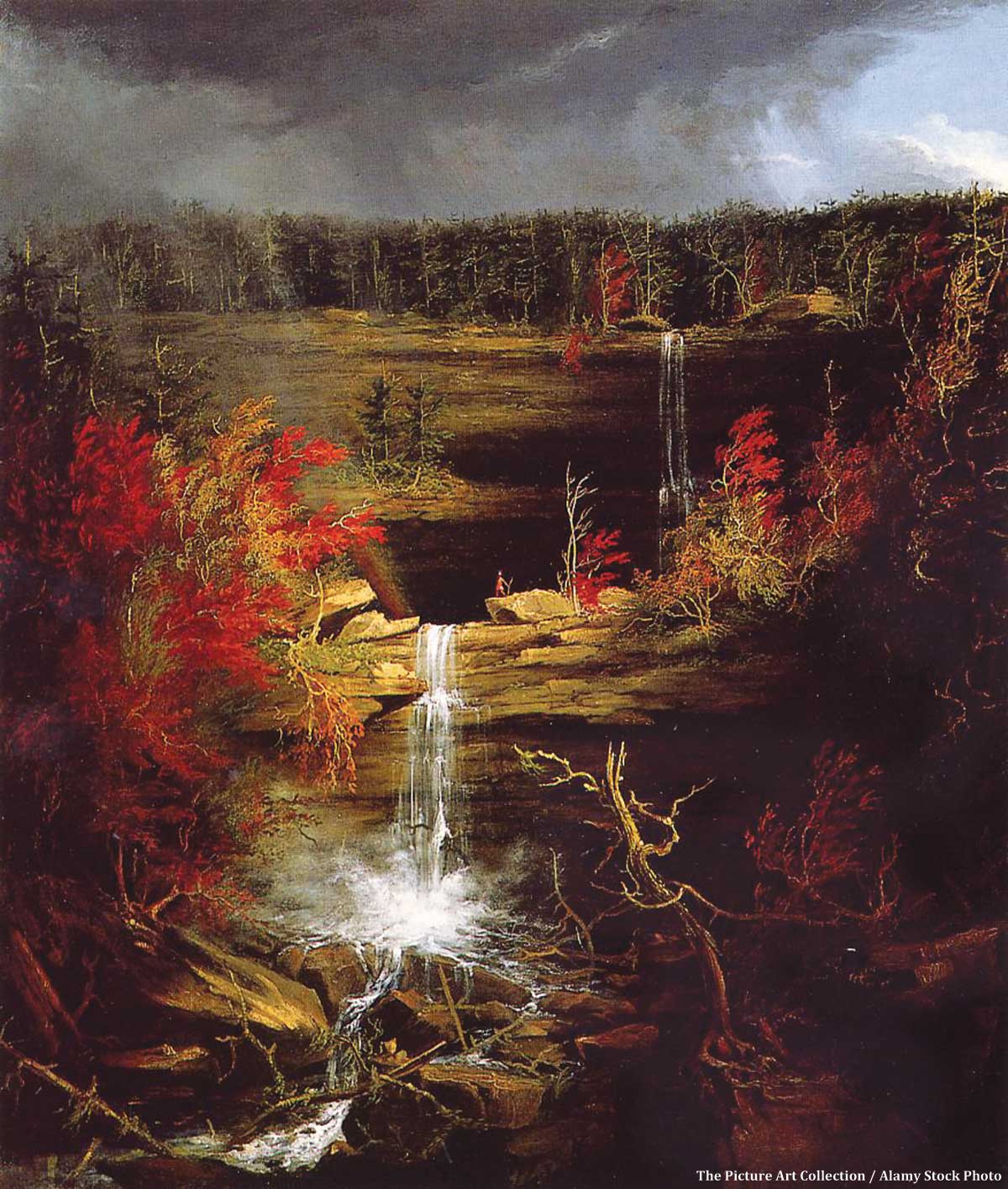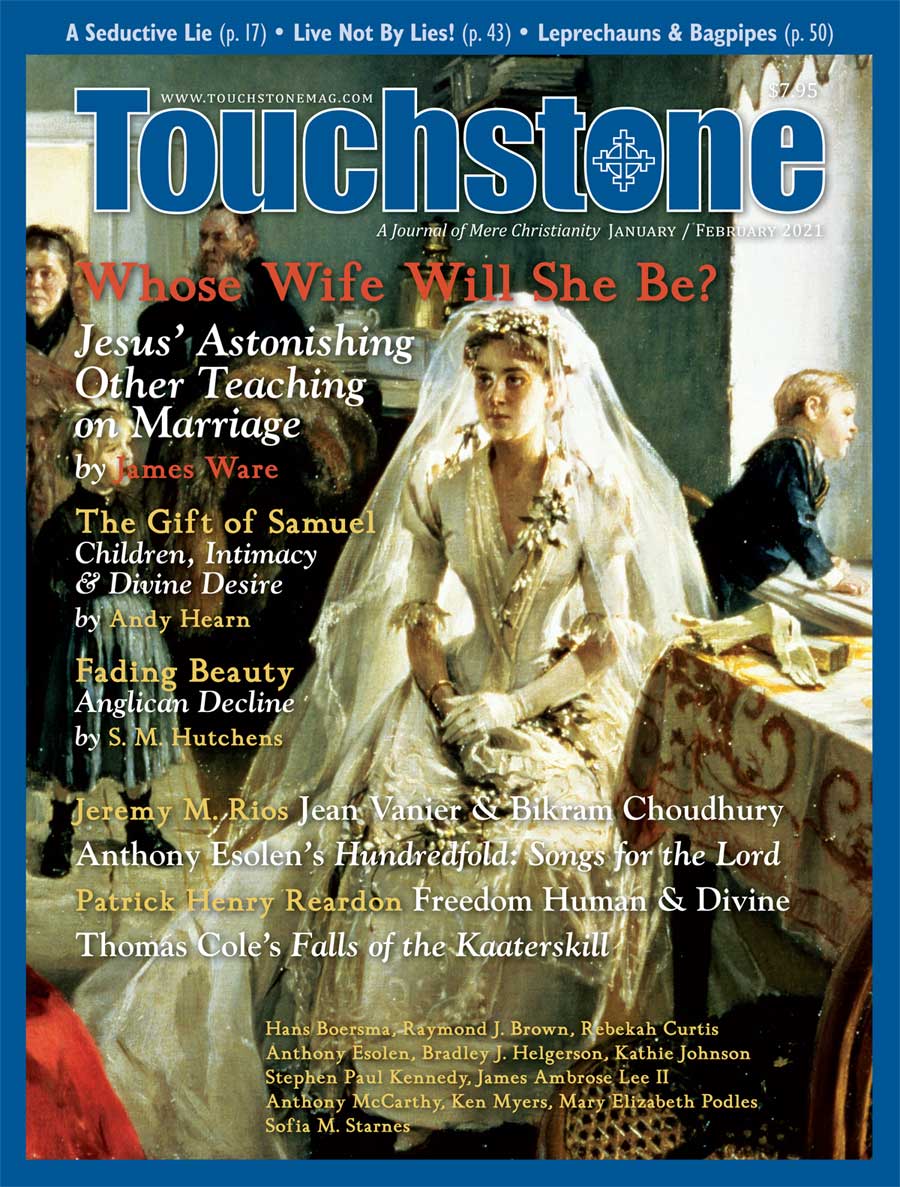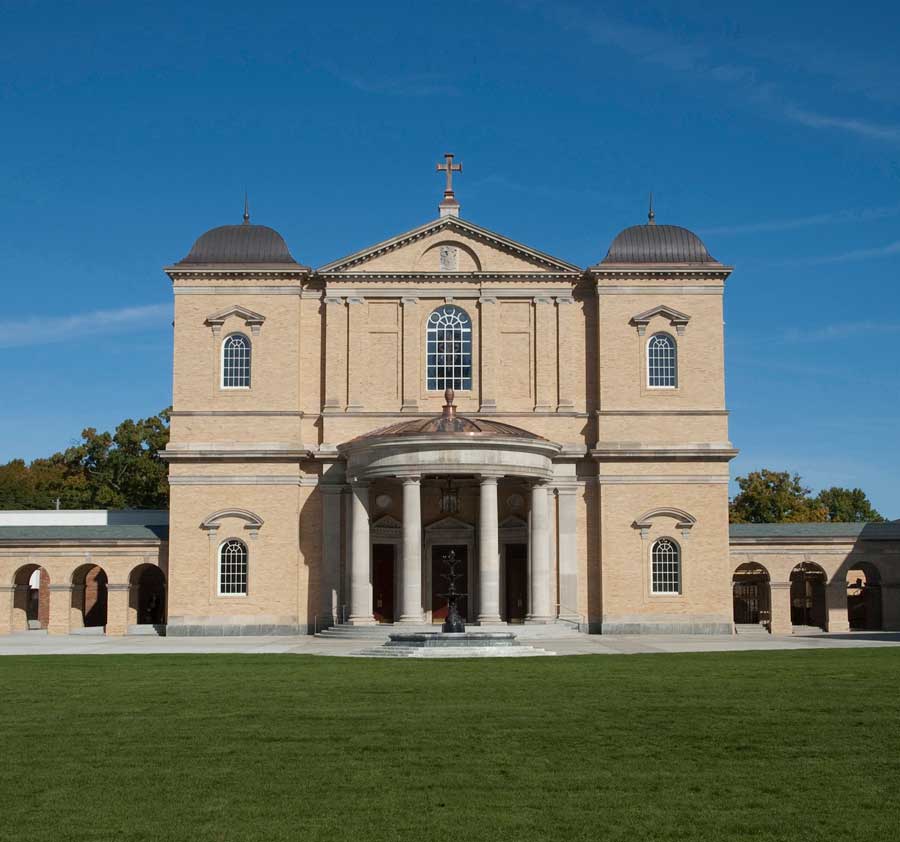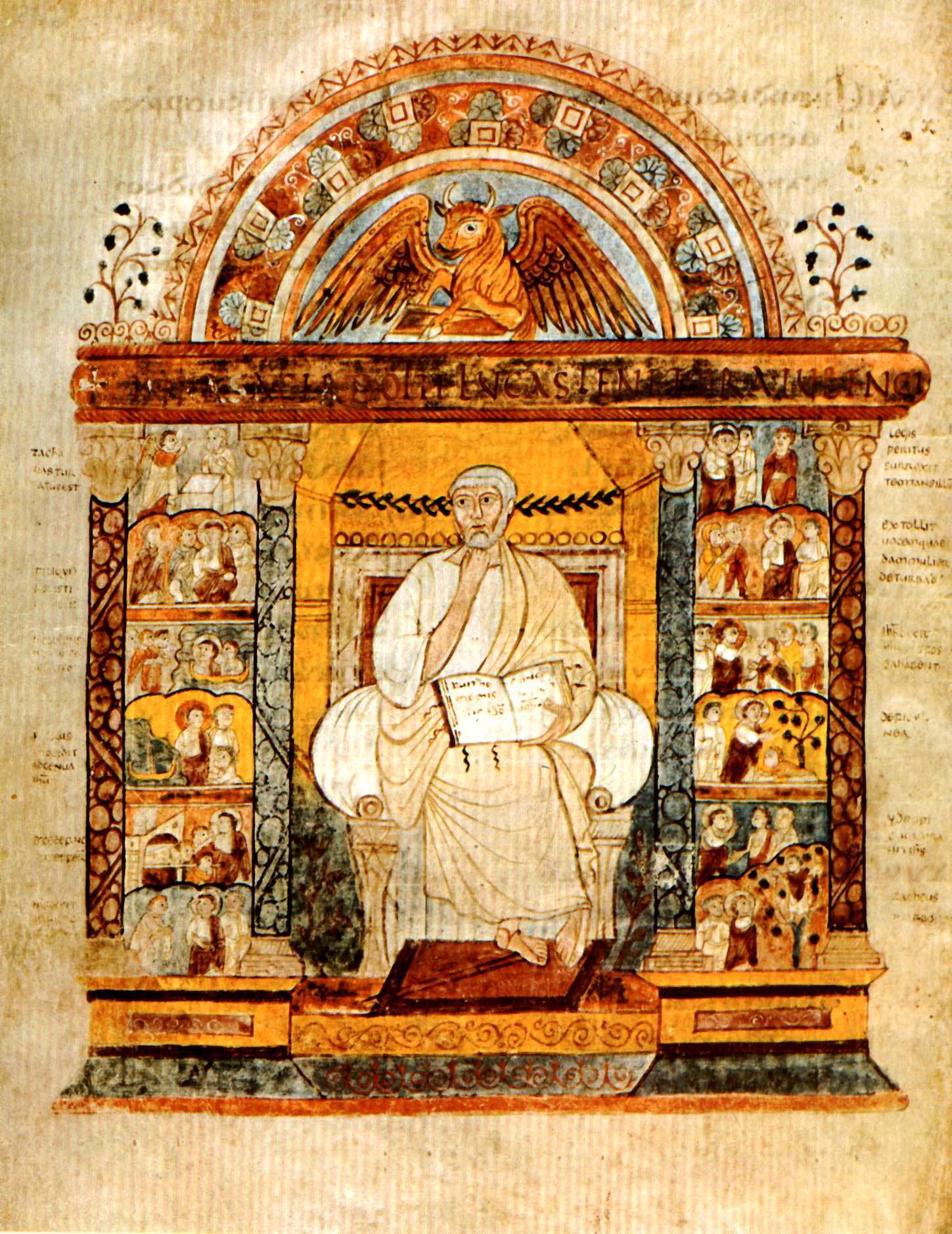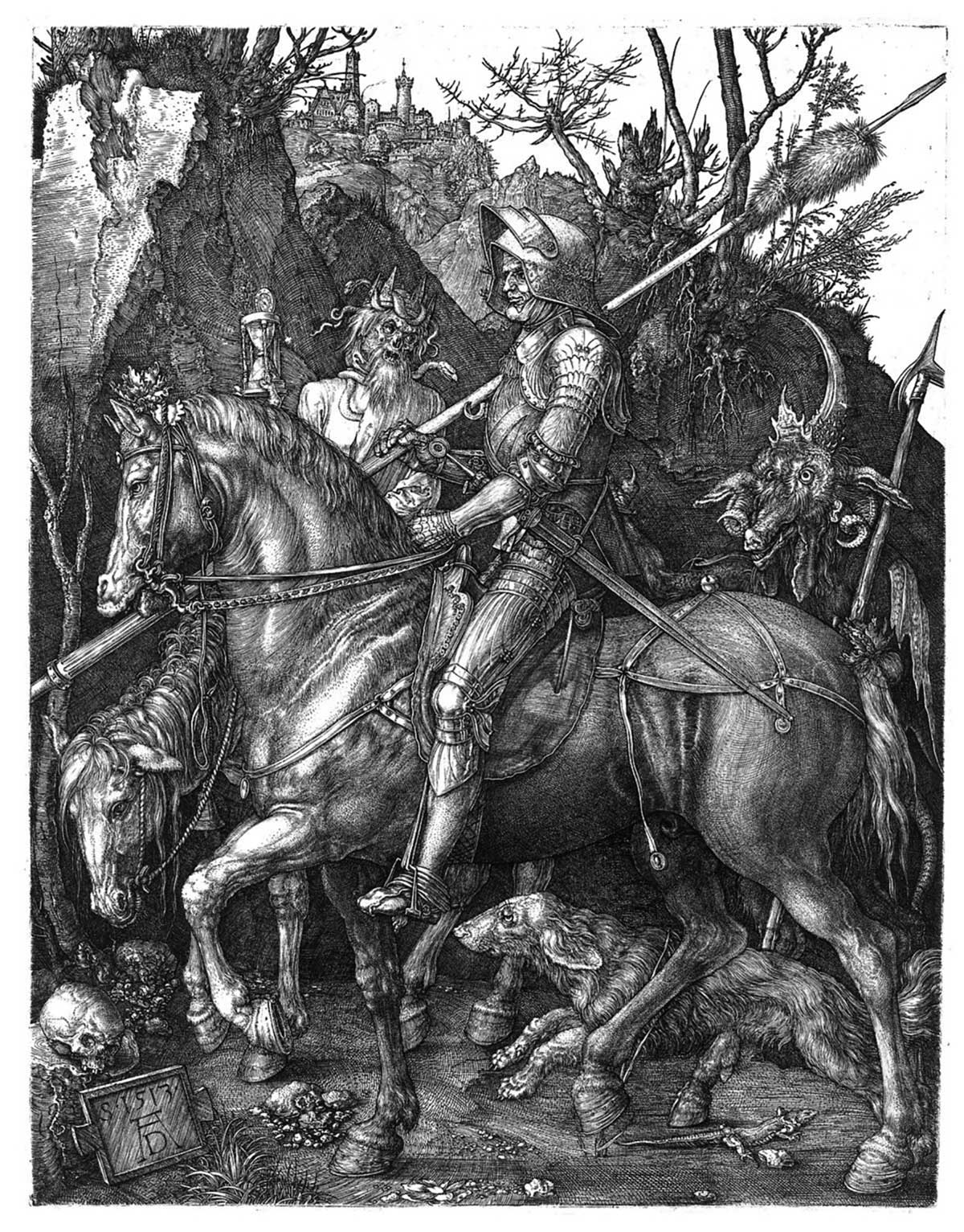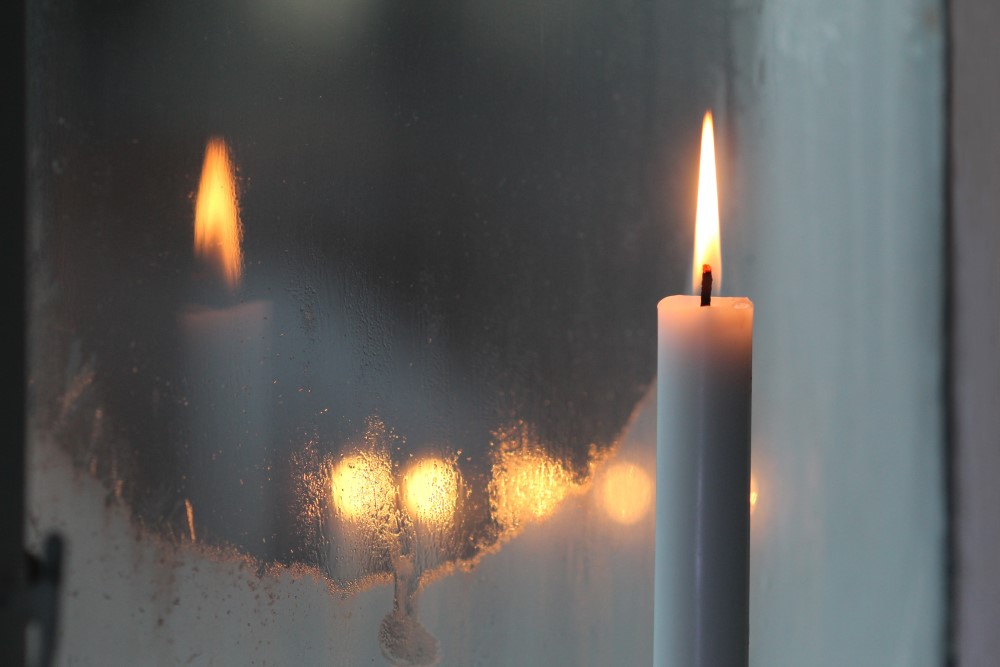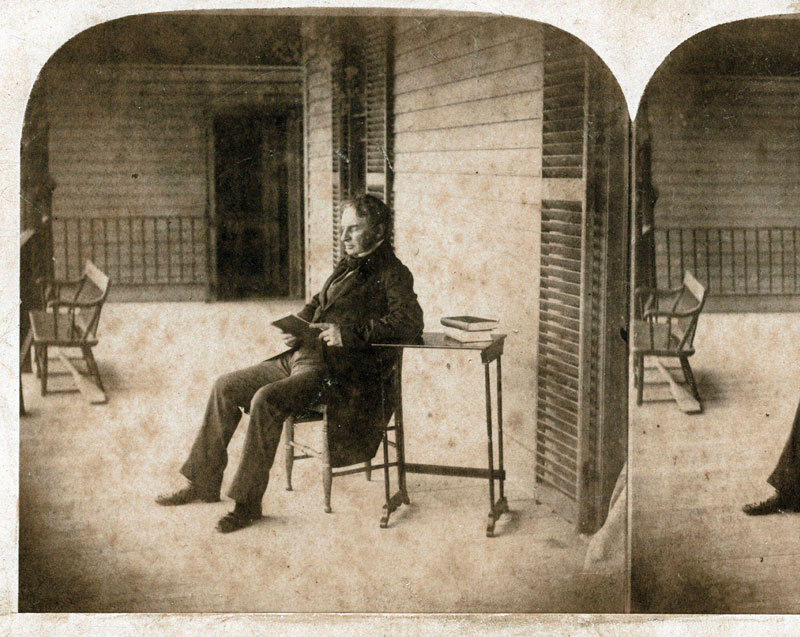Thomas Cole's Falls of the Kaaterskill
I n 1826, Thomas Cole, a transplanted Englishman, painted this view of the Kaaterskill Falls in New York State, and thereby launched the first genuinely American school of painting, the Hudson River School. The painting is an evocative image of a wild landscape, an inverted triangle through which the river falls, from the upper right through a dark chasm to the second falls at the center left, leaping toward the viewer and crashing onto the rocks below. An otherworldly shaft of light falls from the threatening sky above and illuminates the brilliant colors of the autumn foliage flanking the lower falls and the bright white of the water, contrasting dramatically with the darkness of the surrounding rocks and the gathering storm.
In the center, at the brink of the falls, stands a lone figure, at first hard to spot and then impossible to overlook. It is a solitary Indian, a tiny figure in a vast landscape, surveying the works of nature. This is not an uninhabited wilderness, but one that includes the history of man. Or perhaps its beginnings—this is primordial man, an Adam-like figure confronting the implacable forces of creation.
There is much to unpack here. The notion of wilderness had already entered into the American literary consciousness, especially in the works of James Fenimore Cooper, (including a description of these falls), some of which Thomas Cole illustrated in his paintings of The Last of the Mohicans. The wilderness was seen not as static but as a crucible of change, of both creation and destruction. Notice that in his view of the falls, Cole has included trees in all stages of life, from the evergreen wall at the skyline, through the oranges and reds of the fall hardwoods, to the twisted dead trees in the foreground. Over it all swirls the storm rising over the valley, conveying a sense of danger and catastrophic change from above.
THIS ARTICLE ONLY AVAILABLE TO SUBSCRIBERS.
FOR QUICK ACCESS:
Mary Elizabeth Podles is the retired curator of Renaissance and Baroque art at the Walters Art Museum in Baltimore, Maryland. She is the author of A Thousand Words: Reflections on Art and Christianity (St. James Press, 2023). She and her husband Leon, a Touchstone senior editor, have six children and live in Baltimore, Maryland. She is a contributing editor for Touchstone.
subscription options
Order
Print/Online Subscription

Get six issues (one year) of Touchstone PLUS full online access including pdf downloads for only $39.95. That's only $3.34 per month!
Order
Online Only
Subscription

Get a one-year full-access subscription to the Touchstone online archives for only $19.95. That's only $1.66 per month!
bulk subscriptions
Order Touchstone subscriptions in bulk and save $10 per sub! Each subscription includes 6 issues of Touchstone plus full online access to touchstonemag.com—including archives, videos, and pdf downloads of recent issues for only $29.95 each! Great for churches or study groups.
Transactions will be processed on a secure server.
more on art from the online archives
more from the online archives
calling all readers
Please Donate
"There are magazines worth reading but few worth saving . . . Touchstone is just such a magazine."
—Alice von Hildebrand
"Here we do not concede one square millimeter of territory to falsehood, folly, contemporary sentimentality, or fashion. We speak the truth, and let God be our judge. . . . Touchstone is the one committedly Christian conservative journal."
—Anthony Esolen, Touchstone senior editor





